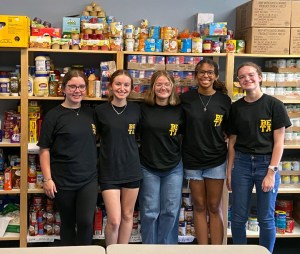Keep back-to-school lunches safe, nutritious
Published 4:38 pm Monday, August 4, 2025
Whether it be cool superheroes or pretty princesses, choosing the perfect lunch box is often a major life decision for children. However, for parents and guardians, the more pressing decision is what to pack inside. As students prepare to head back to school, Alabama Extension is here to help people pack safer and more nutritious lunches.
Packing Nutrition
Carol Connell, an Alabama Extension human nutrition, diet and health specialist at Auburn University, said there are several nutrient-dense foods that keep well in a lunch box with a freezer pack.
Trending
“Unopened tuna pouches with saltine crackers makes a great school lunch,” Connell said. “Good options for sides or snacks include almonds, pecans, fruits — such as apples, grapes, bananas and raisins — and vegetables, such as raw carrots, celery, broccoli and cauliflower.”
For some added protein, peanut butter pairs great with several of these foods, such as celery, raisins and bananas. Raw vegetables can be paired with a ranch dressing for added flavor, but Connell said it should be used in moderation.
As school and extracurricular schedules begin to ramp up, it can be tempting to turn to prepackaged lunches as quick school-lunch options. However, Connell said some of these are high in elements such as sodium and saturated fat.
“Some prepackaged lunches contain 30 to 35% of the recommended daily value of sodium and saturated fat,” Connell said. “Many other convenience foods often eaten with these lunches would add even more sodium and saturated fat to the meal.”
If using these prepackaged lunches, Connell recommends reading the labels first. Try to find ones where the sodium and saturated fat levels are less than 20%, ideally 10%, of the recommended daily value. Also, Connell said to look for ones that are high in calcium, potassium and vitamin D.
“A good daily value percentage for these would be greater than 20%, because they are important to growing children,” Connell said. “If using a prepackaged lunch, pair it with a vegetable and fruit from the list above to increase nutrients. Also, see if milk can be purchased at the lunchroom to add high-quality protein, calcium and vitamin D.”
Trending
Keeping it Clean
When packing a school lunch, a clean lunch box is always important. Susan Hill, a food safety and quality Extension agent at Auburn University, said people need to clean lunch boxes after every use.
“All food has the potential to grow bacteria, so you need to wash out lunch boxes every day,” Hill said. “For some lunch boxes, putting them in the dishwasher is a fast way to disinfect them for the next day. If a lunch box is not dishwasher safe, use hot soapy water to wash and disinfect it.”
No matter the cleaning method, it is important that the lunch box is completely dry before packing food inside. This reduces the chance of bacterial growth.
Controlling Temperatures
Once a lunch box is clean, then comes the important task of properly storing food inside. Students can be at school several hours before their designated lunchtime. If students do not have access to a refrigerator, parents and guardians need to equip lunch boxes with items to keep perishable foods at the right temperature. Hill said cold foods should stay at 40 degrees Fahrenheit or lower.
“For lunches that require refrigeration, you must purchase freezer packs to keep the food cold,” Hill said. “Keeping your child’s lunch cold will prevent possible food poisoning. Place the freezer pack in the bottom of the lunch box. For larger boxes, use a freezer pack on both the bottom and top.”
Warm foods need to be kept at 140 degrees Fahrenheit or higher to prevent growth of bacteria that causes foodborne illnesses. Keeping a packed lunch at this temperature until lunchtime can be difficult, so warm foods are not the best option for school lunches.
“I recommend keeping lunches simple and sticking with cold food items,” Hill said. “It is much easier to regulate the temperature for cold foods, keeping your child’s lunch bacteria free.”
If cold storage is an issue, people can also pack their child a more shelf-stable lunch, such as a peanut butter and jelly sandwich. Some schools restrict peanut products because of allergies, so parents and guardians should ask the school about their policy before packing it in their child’s lunch.
More Information
Need some inspiration for more nutritious meals? Check out a series of nutrition-focused recipes at livewellalabama.com. For more information on safe school lunches, see the Alabama Extension publications, “What’s in Your Lunch Box?” and “Amber & Zac: Lunch Box Food Safety.”





